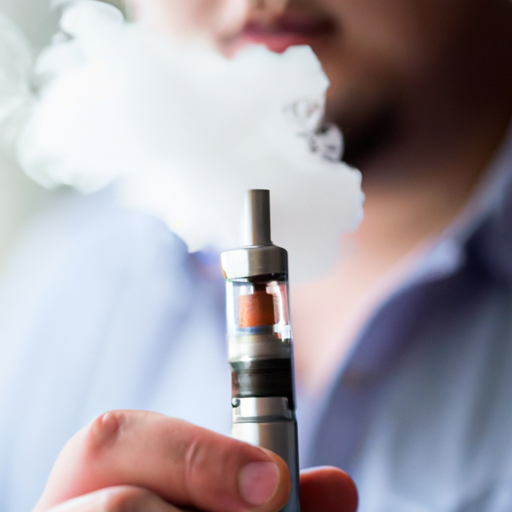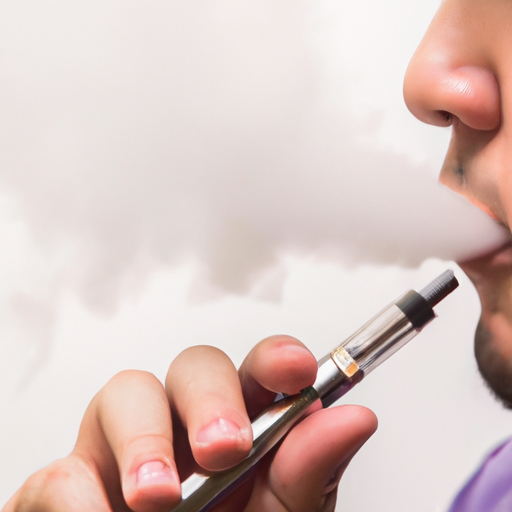No products in the cart.
No products in the cart.
You may have noticed that vaping has become quite the popular trend in recent years. Whether it’s the alluring variety of flavors or the perceived lower health risks compared to traditional cigarettes, more and more people are embracing this alternative nicotine consumption method. However, with its increasing prevalence comes the need for vaping regulations to ensure safety and accountability in the industry. In this article, we will explore the current vaping regulations that you need to be aware of, so you can better navigate this ever-evolving landscape.
From age restrictions to product labeling requirements, the world of vaping regulations can be complex and at times overwhelming. But fear not! We are here to guide you through all the essential information you need to know. By understanding these regulations, you can make informed decisions when it comes to purchasing vaping products, whether it’s for personal use or to start a business in the industry. So let’s dive in and explore what the current regulations, policies, and guidelines are regarding vaping, empowering you to make educated choices that prioritize your safety and comply with the law. Vaping has gained significant popularity in recent years, and as a result, there has been an increasing need for regulations to ensure the safety and well-being of consumers. In this article, we will take a comprehensive look at the vaping regulations in the United States, including federal, state, and local regulations. We will also explore age restrictions, product and ingredient regulations, nicotine regulations, advertising and marketing regulations, public use and indoor vaping regulations, online sales and shipping regulations, taxation of vaping products, and international vaping regulations.
Vaping regulations are put in place to protect the public and prevent potential health risks associated with vaping products. These regulations encompass various aspects, including age restrictions, product and ingredient regulations, nicotine regulations, advertising and marketing regulations, public use and indoor vaping regulations, online sales and shipping regulations, taxation of vaping products, and international regulations.
At the federal level, the Food and Drug Administration (FDA) is responsible for regulating vaping products. The FDA has established a set of rules and requirements for e-cigarettes, including premarket authorization, ingredient disclosure, and warning labels. These regulations aim to ensure the safety and quality of vaping products available in the market.
While federal regulations set the baseline standards, individual states have the authority to enact their own regulations on vaping. Some states have implemented stricter regulations, such as flavor bans, while others have adopted a more lenient approach. It is important to be aware of the specific regulations in your state to ensure compliance.
In addition to federal and state regulations, local governments, such as cities and counties, can also establish their own vaping regulations. These regulations may include restrictions on public use, indoor vaping, and licensing requirements for vape shops. It is essential for individuals and businesses to be cognizant of the regulations in their local area.

Age restrictions play a crucial role in preventing underage individuals from accessing vaping products. In the United States, the legal minimum age for purchasing vapes is 21 years old. This age requirement is enforced both at physical retail locations and online.
To ensure compliance with age restrictions, retailers have implemented various age verification processes. This can include requesting identification upon purchase, utilizing age verification software for online sales, and prohibiting the sale of vaping products to individuals without proper proof of age.
Manufacturing standards are put in place to ensure the safety, quality, and consistency of vaping products. These standards encompass various aspects, including hygiene practices, product testing, and labeling requirements. Manufacturers are required to follow these standards to maintain the integrity of their products.
Proper packaging and labeling are essential for informing consumers about the contents of vaping products. Regulations typically require clear and accurate labeling of ingredients, nicotine content, and health warnings. This allows consumers to make informed choices about the products they are using.
There are certain restrictions on the ingredients that can be used in vaping products. For example, some jurisdictions have banned the use of certain flavorings, such as fruit and candy flavors, due to concerns about their appeal to minors. Additionally, there may be restrictions on the use of certain chemicals or additives that are deemed potentially harmful.

Regulations on nicotine content aim to prevent excessive nicotine intake, particularly among vulnerable populations, such as young individuals. Some jurisdictions have implemented limits on the maximum nicotine concentration allowed in e-liquids to reduce the risk of nicotine addiction.
Nicotine warning labels are mandatory on vaping products to convey the potential health risks associated with nicotine consumption. These labels typically include information regarding nicotine addiction, toxicity, and potential side effects. It is important for consumers to heed these warnings and use vaping products responsibly.
The concentration of nicotine in e-liquids can vary significantly. Regulations may require manufacturers to provide clear information on the nicotine concentration present in their products. This allows consumers to make informed decisions about their nicotine intake and choose products that align with their preferences.
To protect minors from the potential harms of vaping, there are strict regulations on advertising and marketing practices. These regulations prohibit the targeting of minors in advertising campaigns and restrict the use of imagery or themes that may appeal to young individuals. This includes restrictions on the use of cartoon characters or celebrity endorsements that could attract a young audience.
Regulations also dictate the claims that can be made in vaping product marketing. Advertising cannot make unsubstantiated health claims or misrepresent the risks and benefits of vaping. Clear and accurate information must be provided to consumers to ensure they can make informed decisions.
Social media has become a popular platform for advertising and marketing vaping products. However, regulations are in place to prevent the targeting of minors and the dissemination of misleading information. Vape companies must comply with these regulations and ensure responsible advertising practices.
To protect non-vapers from exposure to secondhand vapor, many jurisdictions have implemented bans on vaping in public places. This includes areas such as restaurants, bars, parks, and public transportation. These restrictions aim to maintain clean air quality and reduce potential health risks.
Schools and colleges often have specific policies regarding vaping on their premises. Many educational institutions prohibit vaping for students, staff, and visitors. These policies are in place to promote a healthy and smoke-free environment for learning.
Workplaces may have their own regulations regarding vaping. Some employers have implemented complete bans on vaping in the workplace, while others have designated specific areas or policies for vaping. It is important to adhere to the regulations set forth by your employer and respect the rights and preferences of your colleagues.
Online retailers must implement robust age verification processes to prevent underage individuals from purchasing vaping products. This may involve verifying the buyer’s age through identification or utilizing age verification software. Online sellers have a responsibility to ensure that they are only selling to individuals of legal age.
To comply with regulations, online retailers must adhere to shipping restrictions. Some jurisdictions prohibit the shipment of vaping products to certain areas or require additional documentation for shipping. Online sellers must be aware of these restrictions and comply with them to avoid legal repercussions.
Excise taxes are levied on vaping products to generate revenue and discourage excessive consumption. The amount of taxes imposed can vary depending on the jurisdiction and the specific product. These taxes may be applied at the federal, state, or local level, and can significantly impact the cost of vaping products.
In addition to excise taxes, vaping products may also be subject to sales taxes. Sales taxes are imposed on the final purchase price of the product and are typically collected by the retailer. The specific sales tax rate can vary depending on the location.
The European Union (EU) has implemented comprehensive regulations on vaping products under the Tobacco Products Directive (TPD). These regulations cover a wide range of aspects, including product and ingredient regulations, packaging and labeling requirements, advertising and marketing restrictions, and nicotine concentration limits. Vape companies must comply with the TPD regulations to market their products in EU member countries.
Vaping regulations vary from country to country, and it is important for individuals and businesses to be aware of the specific regulations in each jurisdiction. Some countries have implemented stringent regulations, while others have a more relaxed approach. It is advisable to research and comply with the regulations in the country where you intend to use or sell vaping products.
In conclusion, vaping regulations are aimed at ensuring the safety, well-being, and responsible use of vaping products. These regulations encompass various aspects, including age restrictions, product and ingredient regulations, nicotine regulations, advertising and marketing regulations, public use and indoor vaping regulations, online sales and shipping regulations, taxation of vaping products, and international regulations. It is important for individuals and businesses to familiarize themselves with these regulations to ensure compliance and promote a safe vaping environment.